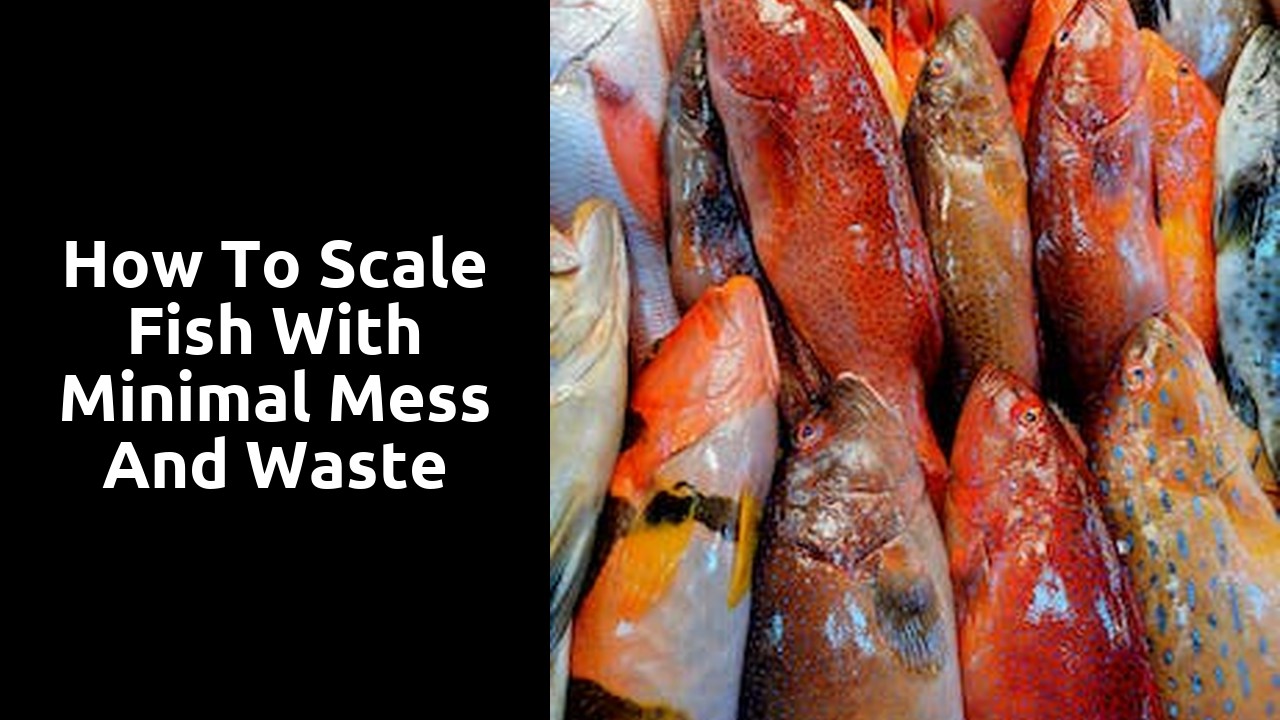
How to Scale Fish with Minimal Mess and Waste
Mastering the Art of Scaling Fish: Tips for a Clean and Efficient Process
Scaling fish can often be a messy and time-consuming task, but with the right techniques and tools, it can be transformed into a clean and efficient process. To start, it is essential to have a sharp and sturdy scaling knife. A dull knife not only makes the task more difficult but also increases the chances of accidents. Invest in a quality scaling knife that is specifically designed for this purpose.
Before you begin scaling, ensure that your work area is well-prepared. Lay down a clean cutting board or a plastic mat to catch any scales that may fly off. This simple step will save you precious time when it comes to clean up later. Additionally, it is beneficial to have a large bowl or basin nearby to collect the scales as you work. This will help contain the mess and prevent scales from scattering all over your kitchen. By following these tips, you will be well on your way to mastering the art of scaling fish with ease and efficiency.
The Ultimate Guide to Scaling Fish: Minimizing Mess and Maximizing Yield
Scaling fish can be a messy and time-consuming process. However, with the right techniques, you can minimize the mess and maximize the amount of usable meat you get from each fish. One important tip is to use a sharp and sturdy scaling knife. A dull knife will make the task more difficult and may result in a higher chance of injury. Make sure to maintain a firm grip on the knife and use short, controlled strokes to remove the scales.
Scaling Fish Made Easy: Essential Techniques for a Neat and Tidy Kitchen
Scaling fish can be a messy and time-consuming process, but with the right techniques, you can achieve a neat and tidy kitchen. The key is to have the right tools on hand. A good quality scaling knife with a sharp and sturdy blade is essential. This will make it easier to remove the scales in one smooth motion, minimizing the mess. Additionally, having a cutting board or a clean surface dedicated solely to scaling fish is a great way to keep your kitchen organized and prevent cross-contamination.
Once you have your tools ready, it's important to approach scaling fish with a methodical approach. Start by placing the fish on the cutting board or clean surface, and hold it firmly by the tail. Using the scaling knife, make long, sweeping strokes from the tail towards the head, applying gentle pressure to remove the scales. It's important to be careful during this process to avoid damaging the flesh of the fish. To catch the scales and prevent them from scattering all over your kitchen, you can use a large plastic bag or a damp paper towel placed underneath the fish. This will help contain the mess and make cleanup easier afterwards.
A Clean Start: Scaling Fish the Right Way to Avoid Unnecessary Waste
Scaling fish can be a messy and wasteful process if not done correctly. To avoid unnecessary waste and make a clean start in scaling fish, there are a few essential techniques to keep in mind. One of the key factors in minimizing waste is having the right tools. Investing in a high-quality fish scaler can make all the difference in the efficiency and cleanliness of the process. A good scaler will have sharp, serrated edges that easily remove scales without causing excessive damage to the skin. Additionally, using a sturdy cutting board and a sharp fillet knife will contribute to a smooth scaling process, while reducing the chances of accidental waste.
From Scales to Table: Streamlining the Fish Scaling Process for Minimal Cleanup
One of the key aspects of streamlining the fish scaling process for minimal cleanup is having the right tools at hand. Investing in a good quality fish scaler can make all the difference in ensuring a smooth and efficient scaling process. Look for a scaler with a comfortable grip and sturdy, sharp teeth that can easily remove scales without exerting too much pressure. This will not only make your job easier, but also help minimize the mess created during scaling.
Another important tip for a hassle-free scaling experience is to have a designated workspace that is easy to clean. Whether you are scaling fish in your kitchen or outdoors, it is crucial to have a clean and organized area where you can work efficiently. Covering your work surface with a plastic tablecloth or newspaper can help contain the scales and make cleanup a breeze. Additionally, having a trash bag or bin nearby to dispose of the scales as you go will prevent them from cluttering your workspace and ensure a tidy scaling process.
Scaling Fish like a Pro: Expert Tricks to Reduce Mess and Optimize Results
One of the key tricks to scaling fish like a pro is to have the right tools at your disposal. Investing in a high-quality fish scaler can make a world of difference in terms of efficiency and cleanliness. Look for a scaler with sharp, serrated edges that can easily remove scales without damaging the skin. Additionally, consider using a scaling board or a clean towel to prevent slippery fish from sliding around while you work.
Another expert trick to reduce mess and optimize your fish scaling process is to work with a chilled fish. Keep your fish on ice until you are ready to scale it. The colder temperature helps to firm up the scales, making them easier to remove. It also helps to minimize any unpleasant odors that can occur during the scaling process. By following these tips, you can streamline your fish scaling routine and achieve professional results with minimal mess and effort.
Related Links
Scaling Fish for Restaurant and Commercial UseScaling Fish: Traditional Methods vs Modern Tools